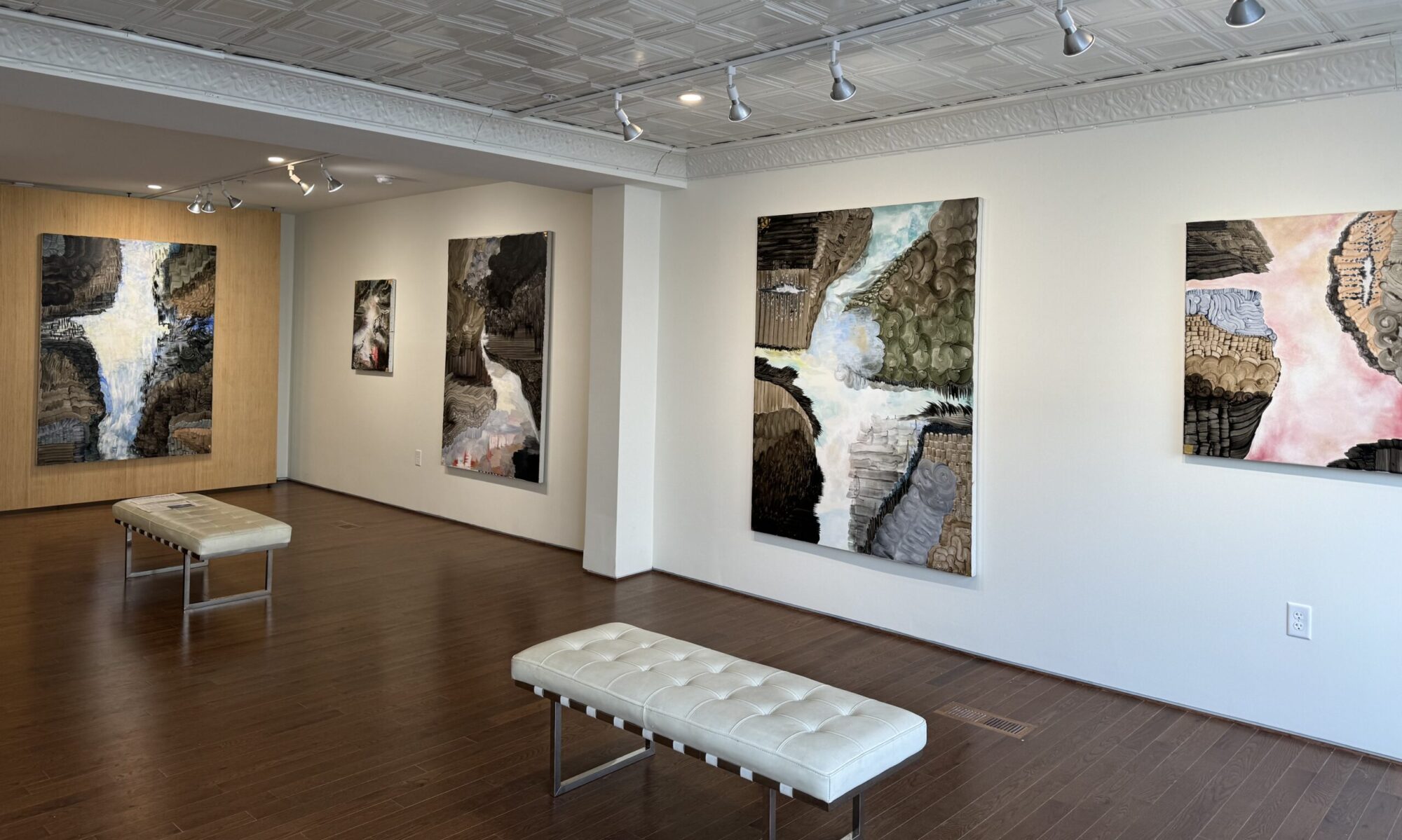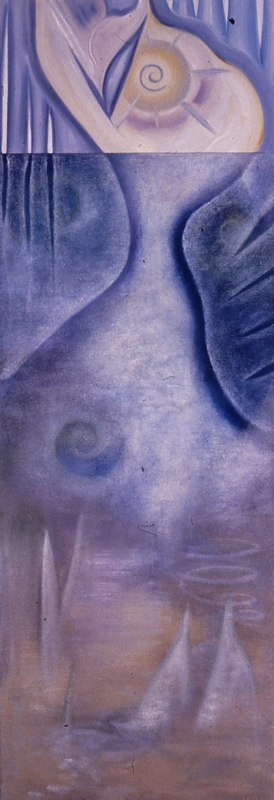Like a functioning evolutionary system, the structures of my paintings hearken notions of our own biological, cyclical origin. The physical scale relates to the proportions of the human species, the concentrated living consciousness in the top (head, mind) and the refracted rooted strength of the skeletal bottom (body) which holds all history in its textual texture. The breathing painted version at the head/mind renders a conscious visual pulsing imitation of life, which in turn rests in jarring contrast to the fossilized historically obscured textural data on the bottom.
Change and the passage of time as phenomenologically experienced in the painted object are rendered in simple terms: land to sea/sea-to-sky/sky to land. The Industrial Revolution marked the beginning of massive chaos for the environment. At the same time, art has documented the Impressionist vision – the fleeting, temporal vision of nature innocent before its consumption by the human population. Like the Impressionists, we render nature as an “objective optical sensation”. We consider re-establishing respect for nature as we back away from the retro-progress of our disposable age.
The door/scroll form of my work rebounds as an entrance, a threshold to microscopic/telescopic worlds. The scroll which is readable, ritual – the door that essentially leads inward, inward to places, to spaces. Limitless space has suddenly become finite as we struggle to accommodate the humans’ insatiable urge to dominate. We rush in (at this late hour) to protect the last environmentally intact ecosystems. Nature is strong but fragile as it struggles to compensate for our chemical age. Chemical and industrial technology which refuses to readjust to its errors becomes the biggest threat at it overloads our precious environment with poison. The new definition of progress is healing.
The visionary reality of these biologically matured images is a form of worship to physical Nature, Nature which encompasses all time in its structural organism. Like a Japanese scroll painting which inhabits a sacred space in the living environment, we are reminded of the ritualistic and meditative function of the art object.
The computer age is not as threatening as projected – we feel at home with physical models of the mind – intellectual toys, friendly time-savers. We are ruled by chemicals, not computer robots, as viruses outwit science. Nature in this present biological and chemically fractured society looms sinister in its altered and artificial state. Meanwhile we confront root nature as a precious holy specimen – re-acquainting ourselves with the truth bearer of our being and consciousness.








